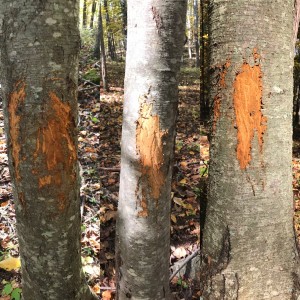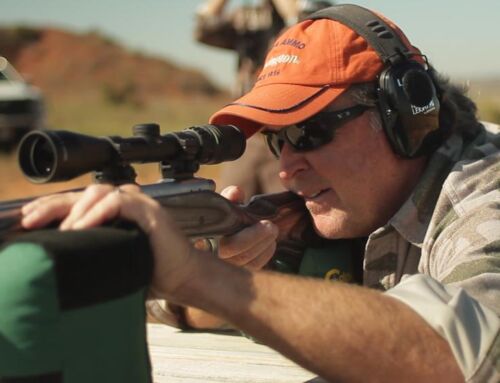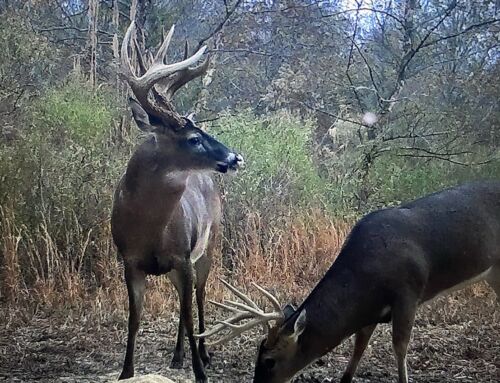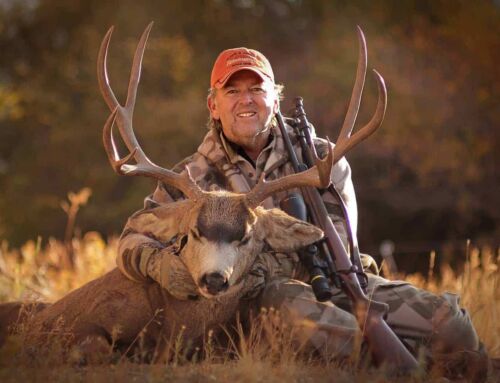 Most of the trees that bucks rubbed last October and November are still whitish scars on the trees, and easy to spot in the spring woods. Look especially close for “signpost” rubs–large, scarred trees that mark some section of a mature buck’s core living area.
Most of the trees that bucks rubbed last October and November are still whitish scars on the trees, and easy to spot in the spring woods. Look especially close for “signpost” rubs–large, scarred trees that mark some section of a mature buck’s core living area.
Missouri whitetail scientist Grant Woods says that while mature bucks blaze the rubs on thick trees during the lead up to the fall rut, many deer interact with them year-round. “Big rubs act as communal pheromone wicks and are located in areas with high deer traffic,” he says. Bucks and does can easily see the rubs and sometimes veer over for a sniff. Many signpost rubs are rubbed again and again by rutting bucks each year; one big rub may show years of healing bark.
Woods has found a correlation between the number of rubs in an area and the number of older bucks that live there. On a management project on a property in Tennessee, he observed an amazing 5,000 rubs per square mile, or 7.8 rubs per acre.
If you find a piece of woods lit up with rubbed trees like that, start looking for bow stand sites for this fall. Whitetail bucks are habitual, and they rub and scrape in the same general areas year after year. Find old rubs now and make a note to come back and check them again as bucks start rutting later on this October. Even if the buck that blazed most of those rubs was killed a hunter or hit by a car over the summer, another mature buck is likely to move into the area and rub and scrape there this fall.





